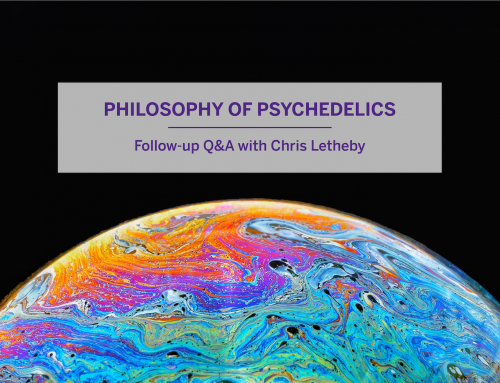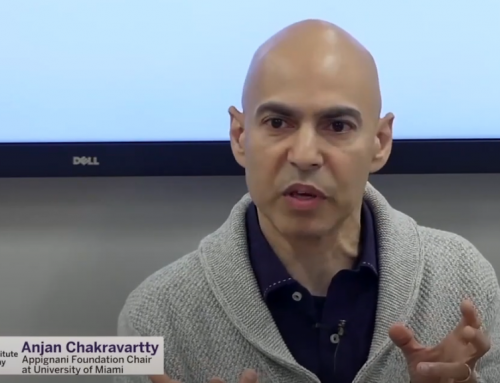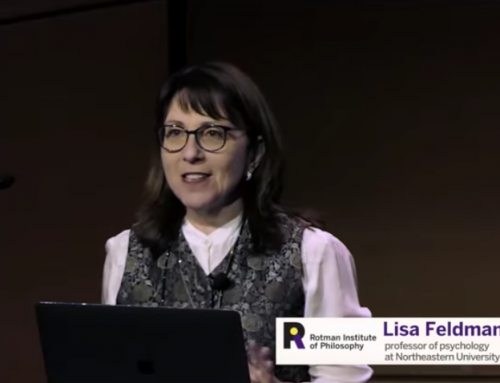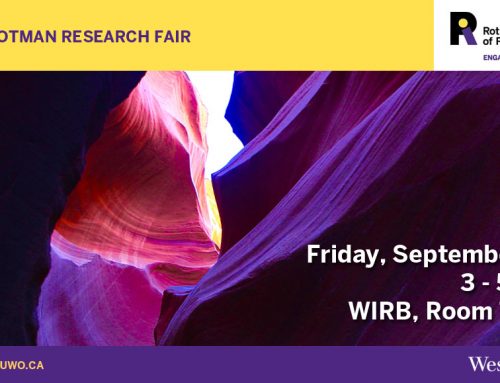On April 19th, 2013 Gregory M. Mikkelson from McGill University visited as a special lecturer in the philosophy of biology, which was co-organized by the Rotman Institute and the Biology Department’s Friday Philosophicals. Mikkelson’s main research interests are in environmental ethics, ecology and economics. His talk at Western prompted a very fruitful discussion, some of which is captured in what follows.
In environmental ethics, positions can largely be classed as either holistic or individualistic. Some classic holistic views are Leopold’s (1949) ‘Land Ethic’, and Naess’ (1984) deep ecology. Examples of individualistic environmental ethics are found in Taylor’s (1986) Kantian biocentrism, Singer’s (1975) utilitarian zoocentrism, and what Mikkelson calls Norton’s (1984) ‘stubborn anthropocentrism.’ Mikkelson (2011) supports a holistic approach, which he calls ‘richness theory’, and argues against individualistic approaches.
Richness theory owes its historical origins to Aristotle, Aquinas and Leibniz, but Mikkelson is working in the more recent tradition of Peter Miller (1982) and Chris Kelly (2003). His account of richness theory is inspired by Miller (1982), who argued that intrinsic value could be elucidated in terms of the natural property of richness, defined as (i) how internally diverse (heterogeneous, or varied) an entity is, and (ii) how unified (coherent, integrated, or harmonious) it is. On Mikkelson’s account, the intrinsic value of an organism is measured by its degree of richness as defined by Miller. For Mikkelson, richness also accounts for the contributory value of organisms, that is, their contribution to the overall richness of the entities they are part of, e.g., ecosystems, communities, the biosphere, the world. Mikkelson’s account is also inspired by Kelly (2003) who attempts to explain the value of art, knowledge, satisfaction of desire, life, persons, ecosystems, etc., in terms of richness; and further to explain away the alleged intrinsic value of pleasure and disvalue of pain.
Richness theory, in Mikkelson’s view, reconciles four intuitions, which seem contradictory, or at the very least difficult to capture under the usual ethical theories:
- 1. Humans have the greatest intrinsic value (more or less), when compared with other species.
- 2. An Earth with lots of biodiversity would be better than an Earth without biodiversity.
- 3. The non-human part of life as a whole has a greater intrinsic worth than the human part of life.
- 4. An Earth with lots of biodiversity with a moderate human economy would be best.
Individualistic ethics, like those mentioned above, cannot reconcile these four intuitions.
Mikkelson applies what he calls a reduction ad extinctum to individualistic ethics. The idea is that, on these accounts, gaining three billion more humans outweighs losing tens of billions of wild vertebrates. The data to support this example is based on the living planet index of wild vertebrates. He also offers a standard objection to individualistic approaches to environmental ethics, by emphasizing that they equally value a single bacterium and a human life, which seems wrong. But, one may respond here that the comparison need not be made in these terms. We should compare bacteria not with humans, but with the cells that compose a human being, and with their respective life-spans. This might be right, but would already conflict with Taylor’s (1986) standard approach to individualistic environmental ethics, which assigns intrinsic value to organisms themselves, and not to their cells taken individually.
Diminishing returns can explain the way in which variety and harmony is important to developing richness. This leads one to consider higher-level interactions, e.g., resources devoted to a particular species and the intrinsic value of that species. The idea is that integrated wholes are more valuable than the sum of their parts. On Mikkelson’s account of richness theory the contributory value for a group of organisms goes down, not the intrinsic value of each organism (this remains constant) according to diminishing return. He avails himself of the following equation for the intrinsic value of an ecosystem,
Where EQ refers to the encephalization quotient (relative brain size), represents diminishing returns, and D captures diversity.
Many people had questions about his use of EQ during the discussion period. To use brain size as a criterion seems too anthropocentric, using something that is distinctively high in humans as a standard for all
species. One might prefer to use sentience, à la Singer, and compare differences in pain and pleasure. But, the problem is that sentience isn’t quantifiable in the way that relative brain size is. Sure, the pain that a fly experiences is different than that which a human experiences, but how? Also, not all living entities experience pain, and therefore sentience could not be a measure of all instances of richness in the natural world.
One questioner suggested using something like a criterion of phylogenetic diversity rather than EQ. The idea here is that species within a less speciose monophyletic group are more valuable, than those within a more speciose group, because they’re preserving an evolutionary history that is in danger. But, the problem with this criterion, as Mikkelson noted, is that these sorts of properties are relational properties and not intrinsic properties to the organisms themselves. Such rejection of relational properties as measures of an entity’ contribution to richness seems also in tension with Mikkelson’s focus on the contributory value of organisms, as portrayed in the above formula. If the value of organisms decreases with their rarity, then rarity, a relational property, is, in final analysis, what determines their value in Mikkelson’s formula. Moreover, one might capture the phylogenetic diversity intuition, by proposing that something like DNA or some other genetic material might be the measure of an organism’s contribution to richness, while avoiding the pitfalls of relational properties. Mikkelson admits that EQ is not ideal, and has himself has also toyed with the idea of using cell-diversity as an alternate criterion (2011).
Another problem raised in the question period is raised by the following question: ‘When biodiversity gets low, should we kill humans?’ For example, say there’s only one beetle left, and we have a trolley-problem situation, do we turn the trolley to save the beetle and kill the human? If we are to turn the trolley, then this seems wrong. Mikkelson responded from a non-consequentialist approach, that his project is just one of value theory, that is, that the richness formula may not immediately imply what we should do. He also responded, from a consequentialist standpoint, that we could just bite the bullet here. One might also respond, as a member from the audience did, that in cases of live humans we shouldn’t turn the trolley, but in cases of future humans we should. This points to a further issue with richness theory, which is the question whether it is a theory about the intrinsic value of states of affairs which ought to be promoted, or with that of entities which ought to be respected (see Bradley 2006 on this distinction). In the latter case, one should turn the trolley regardless of whether present or future humans are at stake; whereas in the second, the fact that some entities already exist or not might make a moral difference, as presumably entities deserve respect only insofar as they exist.
An objection from one of his students concerns the late quaternary extinction (cf. Koch and Barnosky 2006). It is meant to be a counterexample to the possibility of humans living in harmony, or not too much disharmony, with nature. The thought that, despite our industrial civilization’s obvious environmental destructiveness, the human species is not inherently destructive and could adopt a more ecologically benign way of living, is often inspired by the observation that pre-industrial or pre-agricultural humans lived in better harmony with nature than we do. However, the quaternary extinction, by instantiating a pre-agricultural case of human ecological destructiveness, suggests that we have been a cancer to the Earth long before the current ecological crisis, and may just be incapable of being better-behaved ecological denizens. Mikkelson’s reply seems to appeal to the fact that there is no evidence that our ancestors who caused the quaternary extinction were trying to live in harmony with the ecological world. If they did try, then their failure may serve as a proof that human harmony with nature is impossible; but the fact that we cannot assume that they did allows us to hope that if we committed to try, there is a possibility that we would do better than them and our closer ancestors.
Works Cited
Bradley, Ben. 2006. “Two Concepts of Intrinsic Value.” Ethical Theory and Moral Practice 9 (2): 111 – 130.
Kelly, Chris. 2003. “A Theory of the Good”. University of Colorado.
Koch, Paul L., and Anthony D. Barnosky. 2006. “Late Quaternary Extinctions: State of the Debate.” Annual Review of Ecology, Evolution, and Systematics 37 (1): 215–250. doi:10.1146/annurev.ecolsys.34.011802.132415.
Leopold, Aldo. 1949 [1987]. A Sand County Almanac, and Sketches Here and There. New York: Oxford University Press.
Mikkelson, Gregory M. 2011. “Weighing Species.” Environmental Ethics 33 (2): 185–196.
Miller, Peter. 1982. “Value as Richness: Toward a Value Theory for the Expanded Naturalism in Environmental Ethics.” Environmental Ethics 4 (2): 101–114.
Naess, Arne. 1984. “A Defence of the Deep Ecology Movement.” Environmental Ethics 6 (3): 265–270.
Norton, Bryan G. 1984. “Environmental Ethics and Weak Anthropocentrism.” Environmental Ethics 6 (2): 131–148.
Singer, Peter. 1975. Animal Liberation: A New Ethics for Our Treatment of Animals. New York: New York Review : Distributed by Random House.
Taylor, Paul W. 1986. Respect for Nature: A Theory of Environmental Ethics. Princeton, N.J.: Princeton University Press.







